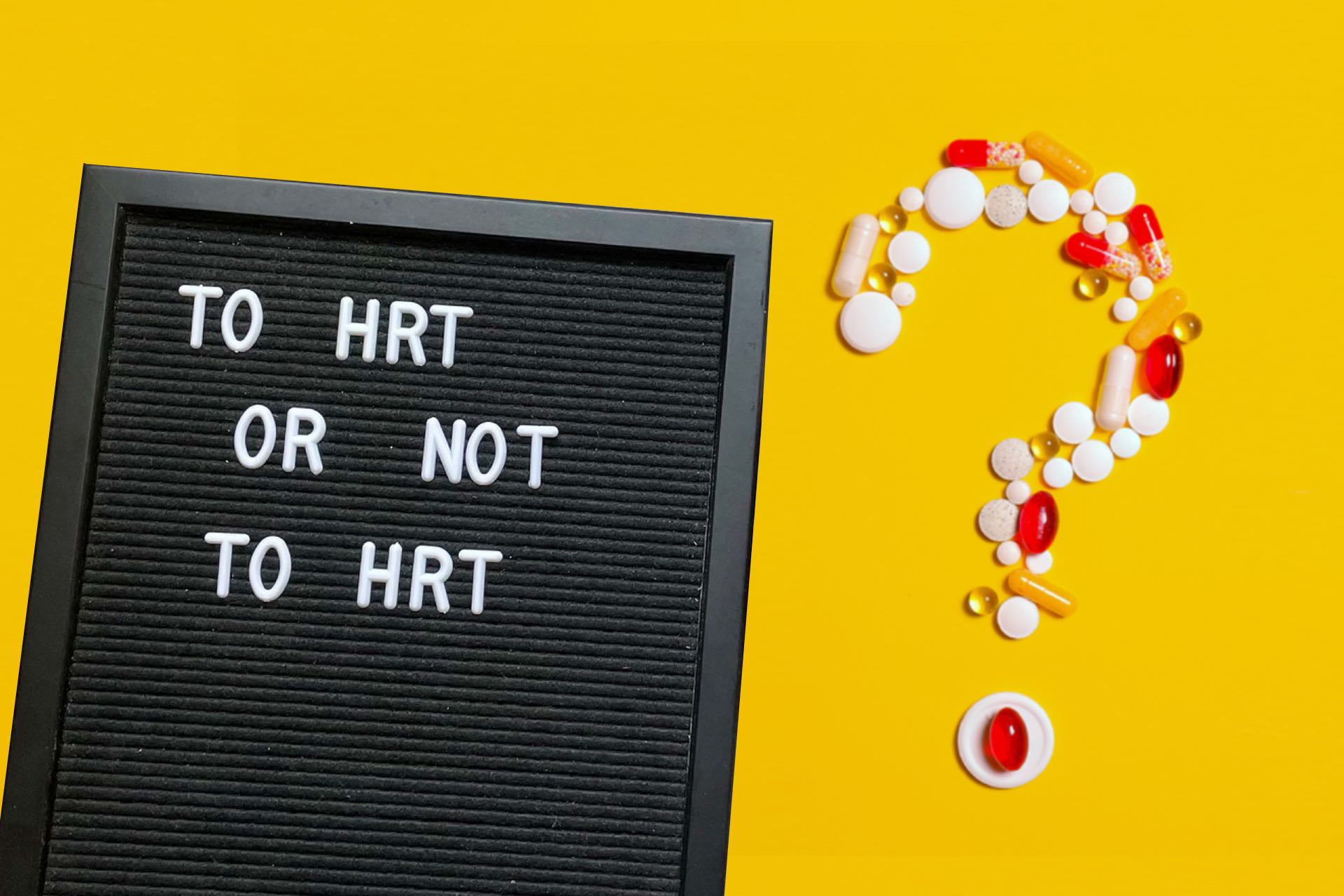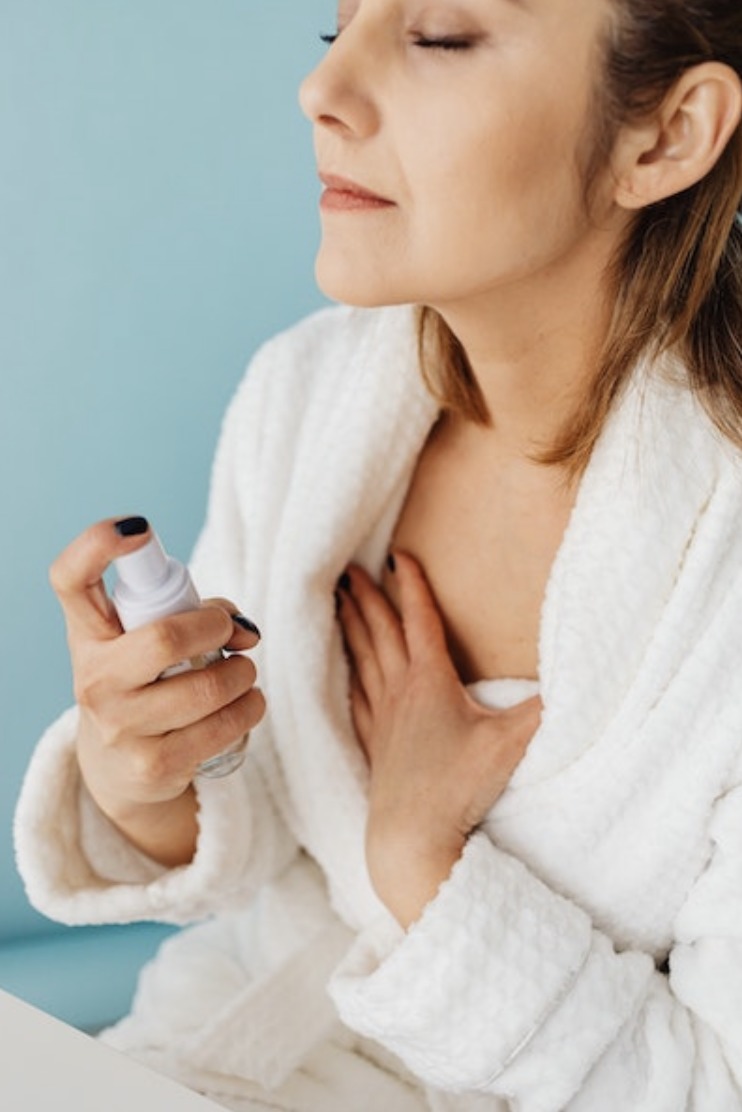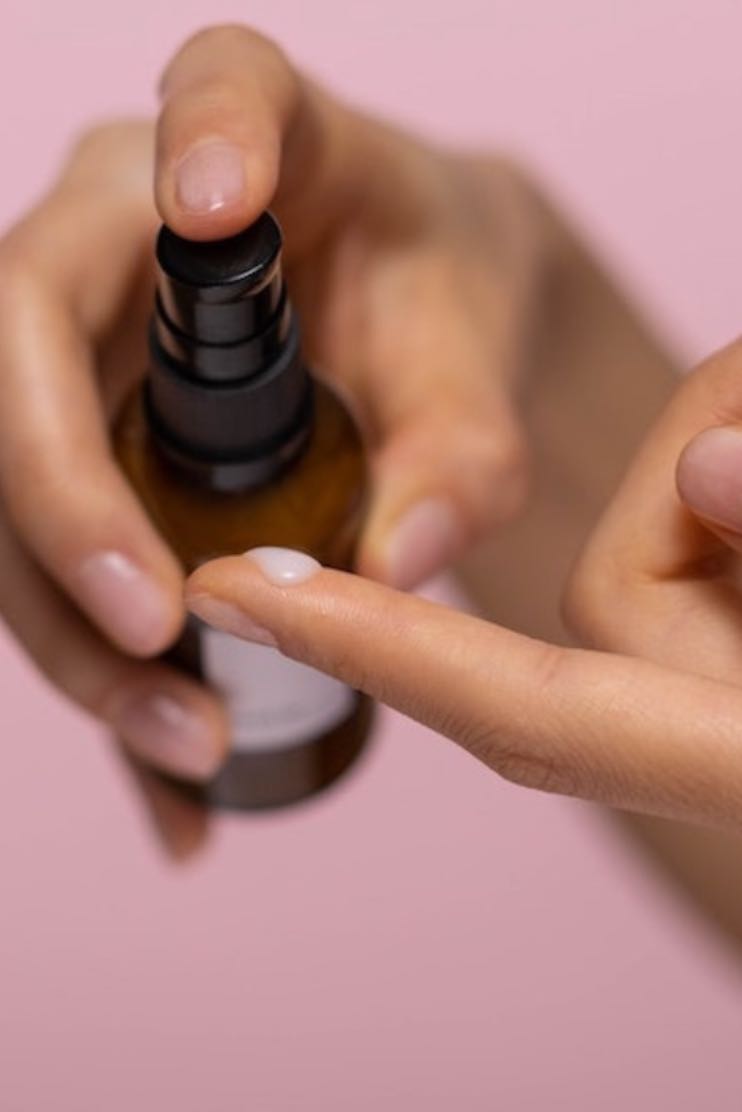
18 Jan Menopause Matters: To HRT or not to HRT?
Written by Prabjit Chohan-Patel
SHE Malta is not qualified to dispense advice regarding hormone replacement therapy or prove the efficacy of HRT or alternative treatments such as supplements. This article should not be used to make any final decisions about whether HRT is right for you. Its sole purpose is to provide information as a starting point for a discussion with your doctor to help you decide whether to HRT or not to HRT.
If you read our article Menopause Matters – So Let’s Talk, Know and Do More About It, you’ll know we provided societal background on menopause, explained the biology of what actually happens in menopause and listed the many associated health implications for women at this stage of life. We also provided information on available options for reducing and relieving symptoms including a brief mention of HRT. (If you’ve not read it, we highly recommend you do so.)
Part 2 of our menopause series takes a closer look at HRT.
Now women are living longer and therefore one third of their life can be in post menopause, it’s never been more relevant to expect a full and active life into one’s advanced years. But opinions and feelings on whether to HRT or not to HRT can be very divided.
One camp sings HRT’s praises for ‘saving’ women’s lives and enabling them to continue business as usual. Another camp mistrusts HRT for going against the evolutionary process and feels that the end of menstrual life is a correct physiological adjustment rather than a mistake by Nature. A third camp suffers from symptoms but doesn’t know enough about HRT as a solution. Lastly, a fourth camp is living out menopause unaware of any troubling symptoms (lucky them!).
As Dr Oliva Anne Cassar – Obstetrician and Gynaecologist says, “I wasn’t always pro HRT but recently, I have noticed an increase in the number of patients whose life has changed for the worse during their perimenopause years. While I still consider every case individually, I do consider myself as pro HRT now.”
Depending on where you are in your menopause journey (and also geographically), you may feel knowledgeable and supported about HRT, confused by conflicting information and conversations or just blissfully in the dark altogether. This article aims to demystify HRT and explain its place in menopause management and female health. We’ll address the background, options, benefits and risks of this often misunderstood route of menopause symptom relief.

Background
HRT was developed in the 1960’s during the advent of feminism and the realisation that women should be able to continue a comfortable, active and healthy life in their mature years. (As Helen Swarbrick, a BBC interviewee says, “You just want to be the person who you were before. You’re not asking for something different or life-changing.”) First formulated in synthetic form, it was originally only intended to relieve hot flushes; it wasn’t until 1988 that the FDA approved it for the prevention of osteoporosis. Over the years, due to the publication of various papers, HRT developed a controversial reputation and wavering popularity. But it was in the late 90’s that two particular studies caused the greatest concern.
The Women’s Health Initiative (WHI) was an American study that found higher rates of heart disease, stroke and breast cancer among its HRT trial participants while a UK survey, Million Women Study (MWS), concluded breast cancer rates were higher among its respondents who took HRT. The results attracted huge publicity, creating alarm among women and confusion amongst doctors. However, a few years later, investigators revealed significant flaws and data inaccuracies in both studies, after discovering that participants had been asymptomatic, long past menopause, previous HRT users with pre-existing health issues. All the findings were withdrawn and the studies discredited.
The WHI carried out a second more rigorous study on a different data set from 2004-07, this time with the opposite conclusion highlighting the benefits of HRT! But the damage had been done. In the aftermath of the wide media exposure of the first studies, many women stopped HRT immediately, doctors were reluctant to prescribe it and HRT usage fell dramatically. Despite positive recently published research (including the WHI in 2020), this negative history has affected HRT uptake in many countries. Many doctors are inadequately informed about the place of HRT in menopause relief, some countries do not have enough stock of HRT meds or only offer limited HRT options and patients can feel daunted by the different options available.
In 2023, although HRT is still an underpublicised area of symptom relief (and usage varies by country), the tide is slowly turning. HRT is increasingly credited as the most effective way of relieving the most common perimenopausal and menopausal symptoms experienced by women in their 40’s and 50’s.

What is HRT?
HRT is the reintroduction of oestrogen and progesterone (and in some cases testosterone) into the body in order to restore and rebalance hormones lost during perimenopause and causing the onset of menopause. It is used to relieve symptoms of perimenopause and menopause such as mood swings, anxiety, memory loss, brain fog, hot flushes, night sweats, vaginal dryness, diminished libido, sleeplessness, as well as reduce the risk of osteoporosis and later life dementia.
There are two main types of HRT:
Combined HRT: oestrogen and progesterone either taken in separate forms or both combined in one preparation. (Combined HRT is taken according to two different time variations: sequential (cyclical) HRT for women who still have their periods and combined continuous HRT for women post menopause.
Oestrogen-only HRT only, prescribed for women who no longer have their womb.
These are available in synthetic, body identical and bioidentical form (depending on country).
How does HRT work?
Each of our body’s hormones has a specific chemical structure and shape that fits into a ‘docking site’ (known as a receptor site) which is present on the surface of all cells that interact with hormones. While sitting in the receptor site, the hormones can pass over the sets of instructions that instigate certain changes in cell activities.
Synthetic hormones have higher levels of oestrogen and a slightly different chemical structure to the ones our bodies produce. Although these hormones are similar enough to fit into the docking sites, their subtle difference in shape and structure means that the instructions passed over to the cells are also a little different, creating a higher impact on the cells.
Body identical hormones, however, have exactly the same chemical structure and shape as the hormones that our bodies naturally produce (or used to produce before menopause). This means that your body can’t tell the difference between these types of hormones and your own; they are identical in every way.
Who can take HRT?
Women in general good health (aside from menopause symptoms) with no history of heart disease, stroke, obesity, high blood pressure or certain cancers can take HRT. You don’t have to wait until the end of your periods to start HRT. Cultural factors or out of date medical information can cause unwillingness in some doctors to consider it for women under 50. However, HRT can be taken by women in their 40’s suffering from symptoms associated with perimenopause. Depending on symptoms, the most effective time to start HRT is generally advised as being during perimenopause or at least as close as possible to the end of one’s menstrual periods. However, women in their mid 50’s can also start HRT. Official menopause organisations now say that up to the age of 60 or no longer than ten years after your last period is an acceptable timeframe to start HRT..
Who should not take HRT?
If you have had a hormone-related cancer, a history of strokes, cardiovascular disease, deep vein thrombosis, high blood pressure or obesity, HRT is not recommended.
How long can you stay on HRT?
The most common duration is two to five years during the most aggressive phase of symptoms. Many doctors advise a maximum of five years while some women stay on HRT for up to seven years. Increasingly, official menopause organisations advise it is safe (depending on individual medical history) to stay on HRT long term. However, the key point is individual medical circumstances and health. How long you can stay on HRT and the dose you should take should be assessed annually with your doctor.
How is HRT taken?
Some HRT meds are ‘local’ only treating the specific area to which they are applied. Others are systemic, meaning they enter the bloodstream. HRT can be taken via numerous methods: skin patches, gels, oral tablets, intrauterine device, vaginal creams/pessaries or rings, implants (pellets inserted under the skin) and oral spray – depending on which form of HRT and product it is. Your doctor will help you choose the one most suited to your symptoms.
There is also a synthetic steroid taken in tablet form, containing estrogenic, progestagenic, and androgenic properties called Tibolone, only suitable beyond a year in post menopause. Not regarded as ‘actual HRT’, Tibolone is not considered as effective as combined HRT and is only available in some countries. However, it is has far lower rates of bleeding and breast soreness.
Benefits
Apart from reducing intolerable symptoms of perimenopause and menopause, HRT has also been linked with a reduced risk of osteoporosis, heart disease, tooth loss, colon cancer, diabetes as well as improvement in joint pains. It is also being considered for its possible prevention of Alzheimers as long as HRT is started during midlife. HRT is credited with significantly improving the quality of women’s day to day life (performance at work, finding basic objects like keys, completing chores, ability to think straight, remembering words and names, sexual relationship). TV presenter Davina McCall covers this brilliantly in her documentary on menopause as well as her book Menopausing. In a survey I conducted amongst a cohort of my own friends, the mental health benefit was top of the list of every participant.
Risks
Explaining the various findings and conclusions on potential HRT risks is complex because each risk factor is different based on type of HRT, age group, length of time on HRT etc. In summary form, HRT could increase the risk of endometrial cancer, blood clots, stroke, dementia (if hormone therapy is started after the age of 60) and breast cancer with long-term use.
Synthetic oestrogen is more linked to side effects and risk factors than body identical HRT due to its higher level of oestrogen than the body’s own natural levels. It is therefore considered safer to take oestrogen alongside progesterone (i.e. combined HRT) to mitigate risks of heart disease, endometrial cancer and breast cancer rather than a synthetic oestrogen-only HRT. Synthetic progesterone (known as progestogen) could increase risk of blood clots, heart disease, high blood pressure, high cholesterol, and breast cancer.
However, it is important to look at actual statistics and decide if these would impact one’s personal decision about HRT. It is also important to note that body identical HRT is far less likely to cause side effects and risk than synthetic HRT making HRT and obvious choice for many women now.
What is the difference between synthesised, synthetic, bioidentical and body identical hormones?
Understanding HRT options and choosing what’s right for you can feel like an impossible to navigate minefield full of unclear conflicting information. The many HRT terms – synthetic, bioidentical, body identical, synthetic identical, compounded identical, biocompounded – do not help the situation! Firstly, all HRT methods are synthesised as this simply means they are made in a laboratory.
Synthetic HRT known as traditional HRT is still the most commonly prescribed form in many countries. A version of the body’s oestrogen and progesterone, it is manufactured by pharmaceutical brands using hormones extracted from the urine of pregnant horses in standard set doses. The appropriate dose is prescribed based on the patient’s individual symptoms and needs. This HRT is regulated.
Body Identical HRT is derived from yams and is increasingly available in some countries as it is considered the most natural way of taking HRT as it mimics the body’s own hormones. It has lower levels of oestrogen than synthetic HRT and is less associated with risk factors such as breast cancer. This is also manufactured in set doses by pharmaceutical brands and the prescribed dose based on the patient’s individual symptoms and needs. This HRT is regulated.
Bioidentical HRT is formulated using soy and yam-derivatives. It is made by compounding pharmacies in individual tailored doses according to the patient’s unique hormonal profile, as determined by the doctor using saliva results. This bespoke service is usually available via specialist private clinics. It is not regulated and attracts wildly differing opinions from the medical profession and health journals.
What’s the alternative…?
Article 1 in our series provided a list of lifestyle options that can all help reduce the number and intensity of menopausal symptoms. While HRT is considered the most effective solution for many women, products like Femarelle® could be seen as an ideal ‘menopause partner’ for those preferring the non-hormonal route.
Available in 33 countries, the Femarelle® range targets all three stages – perimenopause, menopause and post menopause.
Femarelle® Rejuvenate focuses on the perimenopausal stage, supporting women in their 40s suffering from the first confusing and uncomfortable signs of hormonal imbalance and its impact on skin elasticity, hair, sleep, fatigue and mood. The “unique formulation” includes the proprietary fermented soy derivative (DT56a), flaxseed, vitamin B2 and vitamin B7 which work together to help metabolism, release energy, reduce tiredness, maintain skin health and improve hair quality as well as ease the nervous system.
Femarelle® Recharge addresses common problematic symptoms caused by the end of menstruation, i.e. when a woman officially reaches menopause. Hot flushes, night sweats, reduced sex drive, anxiety, depression and aggression are particularly distressing consequences of the significant drop in oestrogen and can present a real threat to quality of life at this point. Recharge contains proprietary fermented soy derivative (DT56a), flaxseed and vitamin B6.
Femarelle® Unstoppable is designed for the future wellbeing of women whose menopause transition is over and now face the rest of their lives in a state of post menopause. Two of the realities of post menopausal hormone deficit are weakened bones and extreme vaginal dryness. Containing soy derivative (DT56a), vitamins B2, B7 and D3 and calcium, Unstoppable assists with increased energy levels, bone health and vaginal health (as well as normal hair and psychological function).
Other such brands that produce supplements to tackle midlife belly fat, hair loss, fatigue and bone condition are Happy Mammoth, Better Body, Biocare and Vitabiotics, to name a handful.
Meanwhile, Vanessa Coleiro, Brand Consultant and Natural Health Enthusiast, offers some valuable insight on the natural alternative to HRT.“Our body is an exquisitely engineered machine with an incredible ability to heal itself and the right kind of diet is a strong factor in cleansing our bodies from years of toxins, obstruction and inflammation.”
Which Doctor, Where do You Start?
Depending on where you live, whether you have insurance or have a good public service, the system will obviously differ. In many countries, a General Practitioner is the first point of contact. In others, women see a gynaecologist either directly or after referral. As described in our first article, many GP’s do not know enough about menopause treatment and may not offer up to date reliable advice. However, not all gynaes are equal! Many of the women I questioned for our series recommended doing some independent research to seek out a doctor who specialises in menopause treatment or is at least known for an open mind on the topic.
To increase the likelihood of a constructive talk with your doctor, it’s a good idea to note down your questions and even ‘rank’ your symptoms. Perhaps ask for data on how effective a particular HRT form is as well as potential impact on future health. You will need to detail your own medical history so that your doctor can guide you and hopefully help you decide how you want to move forward.
Conclusions
As a postmenopausal woman, you have to live with a long term hormone deficiency for the rest of your life. Whether you decide to replace lost vital hormones via HRT or seek alternative ways to boost your levels, the ultimate goal is to alleviate current life-impacting symptoms and safeguard your future health.
HRT is not a one size fits all strategy with a standard/identical type or dose of HRT prescribed for every patient. Every woman’s case is judged separately based on several factors and the most suitable form and dose of HRT individually assessed.
Depending on attitudes and culture of the country you live in, there may be a stronger emphasis on and wider availability of traditional body identical HRT rather than bioidentical.
If choosing HRT, you will need to consider your specific health history, know which symptoms you hope to resolve, discuss the risk to benefit ratio with your doctor and expect a possible period of trial and error to find the right combination (rather than an instant quick fix).

It is important to note that HRT cannot and does not replace a healthy lifestyle. As Dr Olivia Anne says, “Lifestyle changes go hand in hand with whatever treatment is decided and I do emphasise the importance of this to my patients. No hormone I prescribe can ever replace the beneficial effects of weight loss, exercise and a healthy diet.” So if choosing this particular menopause management route, the key thing is to find the right dose and method that promises the most benefit for your particular symptoms with the lowest level of perceived risk.
Don’t miss Part 3. We’ll be addressing some common misconceptions about menopause and answering many of your questions (including the ones you don’t know you have!).
Written by Prabjit Chohan-Patel & Supported by Femarelle










Sorry, the comment form is closed at this time.